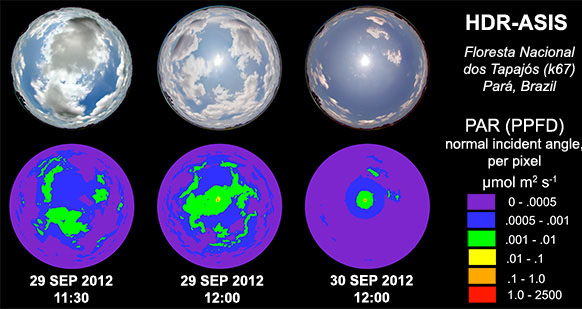This NASA-sponsored project is an international collaboration among the University of Arizona, USGS, and several Brazilian institutions. The science goal is to use remote sensing methods to understand and predict ecosystem carbon cycle responses to climatic variability. The USGS component, which is co-sponsored by the USGS Land Change Science Program, focuses on observation and analysis of radiation-related factors that influence vegetation seasonality and photosynthesis.
Color (RGB) images of instantaneous sky conditions (top row) and directional photosynthetically active radiation (PAR, bottom row) for three sample times at a study site near Santarem, Brazil. These data were acquired with an innovative, USGS-designed instrument, the High Dynamic Range All-Sky Imaging System (HDR-ASIS).


